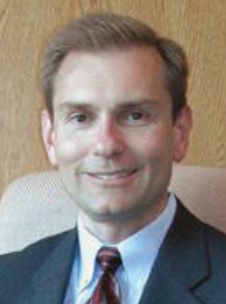Nothing trivial about STLE
Edward P. Salek, CAE, Executive Director | TLT Headquarters Report March 2009
After 65 years the premier organization for tribology research and lubrication best practices is still lookin’ good!
Volunteer leadership and involvement have been another source of strength over the years.
This month marks the 65th anniversary of the day when a group of Chicago business executives paid a $10 incorporation fee to the state of Illinois to create the American Society of Lubrication Engineers (ASLE), the organization which was to become STLE.
In the years since that founding moment on March 3, 1944, volunteers and staff members have diligently recorded the history of the organization. The documents which capture the story of ASLE and STLE are stored safely away in a fi reproof safe that sits near my desk in our Park Ridge, Ill., headquarters office. Since 65 years is a noteworthy birthday, the time is right to break open those records and sample some of the history that’s made STLE the organization it is today.
Our roots actually go back earlier than 1944. A predecessor organization, also known as ASLE, was founded in 1920 but disbanded in 1935 for legal reasons.
Walter P. Hodson, recognized as ASLE’s founding father, was part of the group that signed the incorporation papers in 1944. Ironically, Hodson never served as president and did not live to see the organization get beyond its early days. He was killed in a 1947 plane crash.
The society’s first annual meeting was held in Pittsburgh in September 1944. At that time ASLE had about 100 members. The first corporate member was added in 1945, the first student member in 1949. Our first life member came in 1960.
Chartered in January 1945, the Chicago Section was the society’s first local group; today it remains the largest of STLE’s more than 30 sections. Hamilton was the first Canadian section, founded in 1951.
International ties have always been a part of STLE’s history. The group’s first meeting in Canada, sponsored by the Buffalo Section, came in 1946. By 1961 we added the first non-U.S. industrial member, PAZ Oil Co. from Israel. Today, about 15% of STLE members come from outside North America.
Publishing activity is one of STLE’s hallmarks.
Lubrication Engineering, TLT’s predecessor, has consistently been a top member benefit. Color photos began appearing in LE in 1955, many years before this was a common practice. STLE’s peer-reviewed scholarly journal,
Tribology Transactions, was founded in 1958 (known at the time as
ASLE Transactions).
Volunteer leadership and involvement have been another source of strength over the years. This has been complemented with a dedicated professional staff. ASLE hired its first full-time executive director, Bill Leonard, on March 17, 1947. He is one of six chief staff executives employed by the organization in its 65 years.
The connection to Park Ridge, a Chicago suburb, began in 1964 when the society’s first headquarters building was completed at a cost of $70,000 for building and land. The current headquarters office sits next door to that original building, which is still in use. Interestingly, the current annual property tax bill for STLE headquarters is now more than half the cost to buy land and build the original building.
After much discussion, members voted to change the organization’s name to Society of Tribologists and Lubrication Engineers in 1987. This meant the late George Kitchen was the last ASLE president, and Lowell Horwedel was the first STLE president.
While it’s interesting to look back at these items of historical trivia, anniversaries also are a time to look to the future. In doing so, it is clear that there’s nothing trivial about the organization or the work of the more than 10,000 professionals we serve in the tribology and lubricants business sector.
STLE programs are focused on serving this community by delivering education programs in new and traditional ways, supporting researchers working in new technical areas such as coatings or nanotribology and making sure the STLE brand has marketplace relevance for both employers and customers.
What’s most exciting about this activity are the outcomes that are made possible through science and technology, things like safer and more energy-efficient products that will ultimately make the world a better place for all.
Six decades ago, when ASLE was founded in 1944, the challenges were different, but the potential outcomes were similar. As STLE marks this anniversary, it’s a time to both celebrate these accomplishments and turn to the future with confidence that this is an organization with a proud past and almost unlimited future promise.
Happy birthday, STLE!
 You can reach Certified Association Executive Ed Salek at esalek@stle.org
You can reach Certified Association Executive Ed Salek at esalek@stle.org.